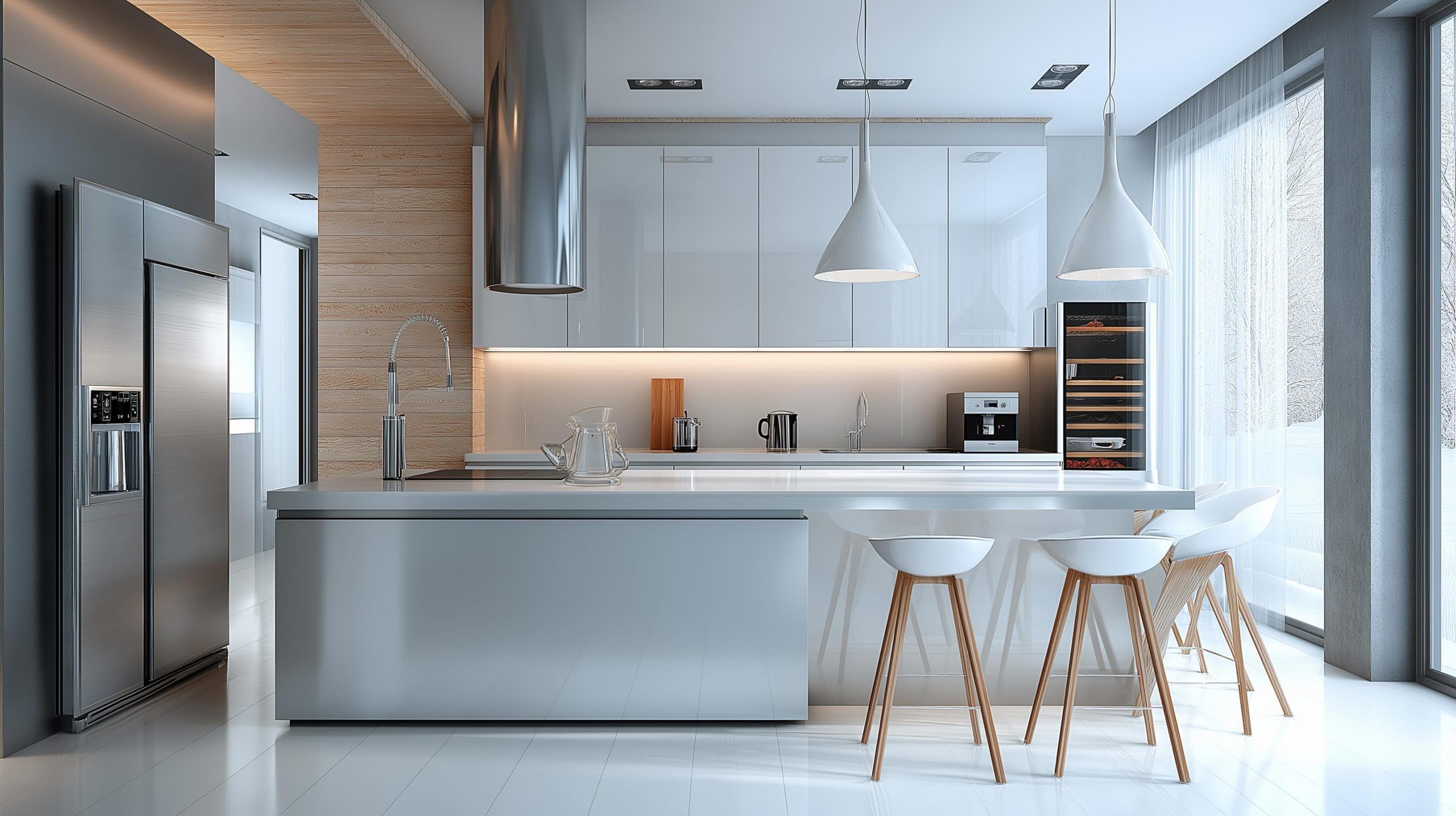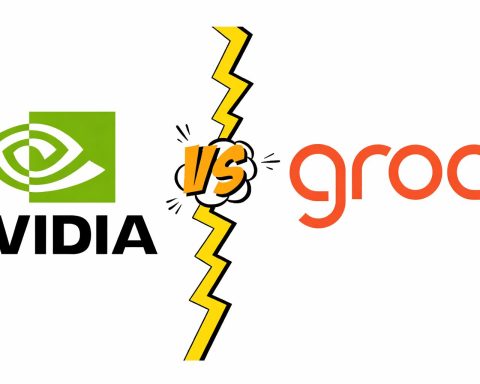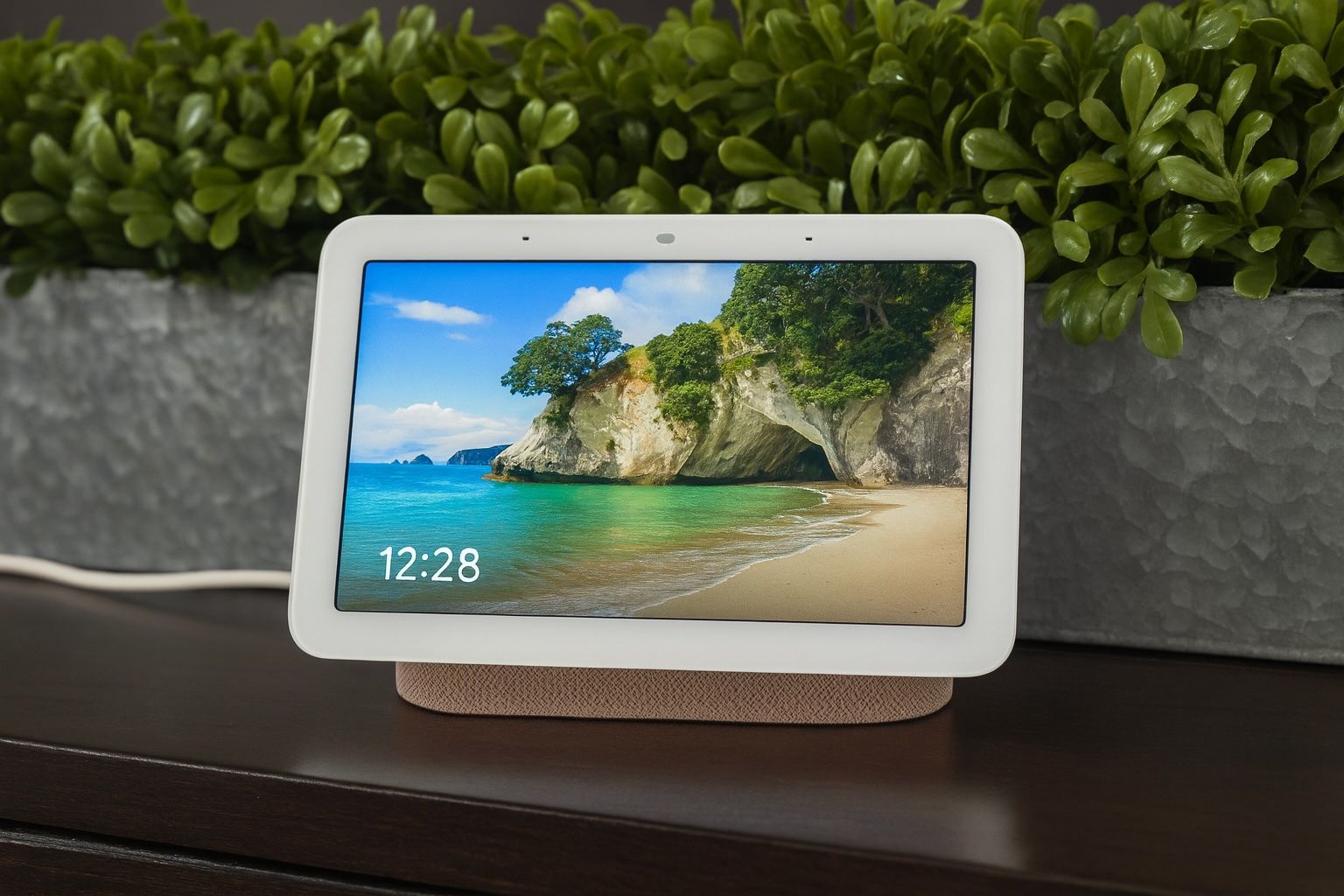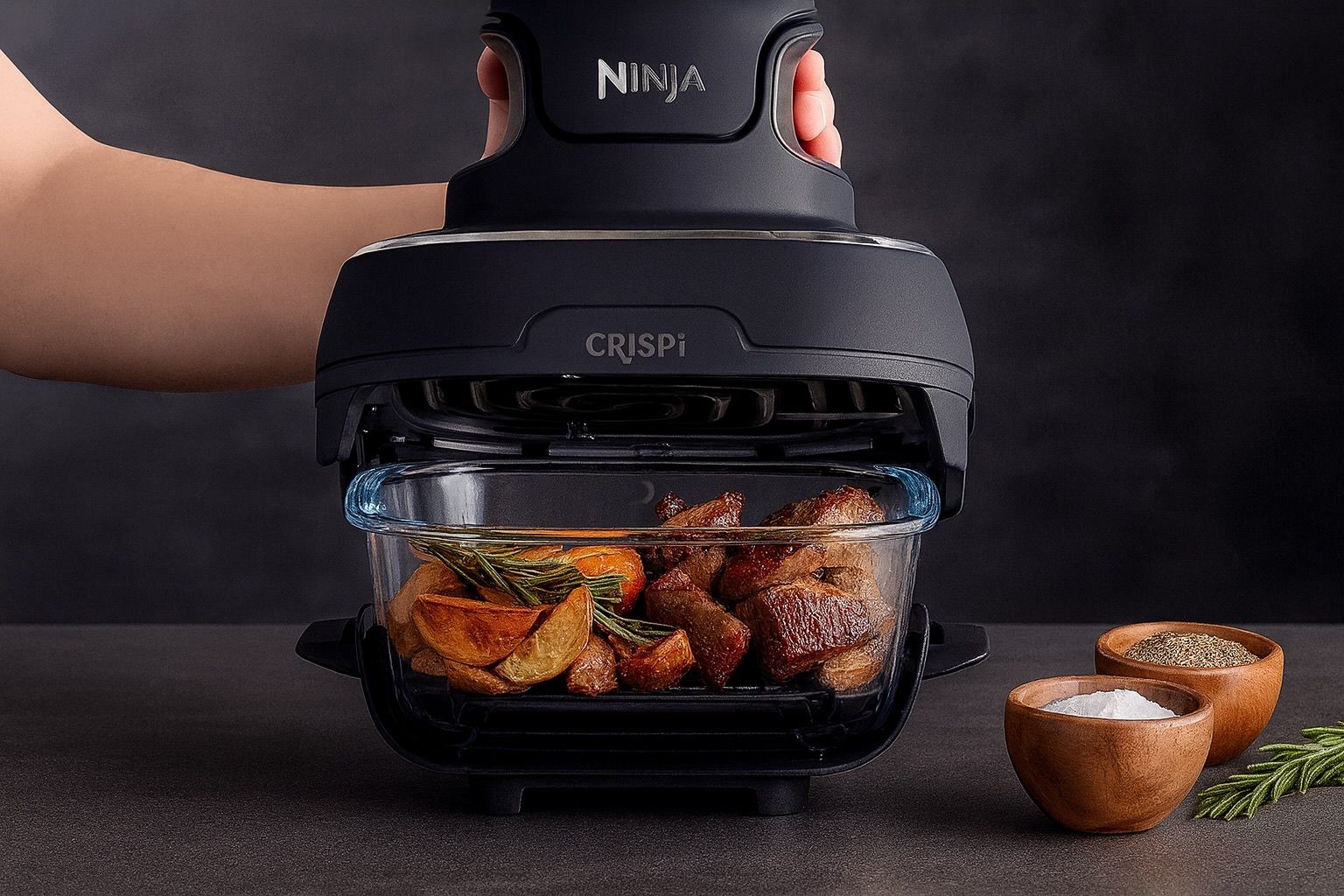- The global market for smart kitchen appliances is projected to reach $14.4 billion by 2030, up from $5.3 billion in 2023.
- Samsung’s 4-Door Flex Bespoke with AI Family Hub+ features AI Vision Inside cameras that can recognize over 30 food items and track inventory automatically.
- LG’s Signature InstaView French Door fridge uses a transparent T-OLED display on the door and internal AI cameras to recognize foods and suggest recipes via the ThinQ app.
- CES 2025 saw Hisense unveil the PureFlat 4-Door Smart Fridge with DishDesigner AI (Microsoft Azure) and a FreshVault vacuum-sealed drawer that keeps meat and seafood fresh up to five days and reduces bacteria by 99.99%.
- GE Café and Profile smart fridges integrate with the GE SmartHQ app, with the article noting GE’s past innovation of a fridge with a built-in Keurig coffee brewer on the door.
- Bosch 500 and 800 Series dishwashers with Home Connect offer PrecisionWash sensors and ultra-quiet operation around 44 dB, typically priced from about $1,000 to $1,500 depending on configuration.
- Samsung Bespoke Smart Dishwashers with LinearWash use a high-pressure spray across the tub and an auto-releasing door for drying, with SmartThings Energy integration and a typical price of $900–$1,300.
- The Tovala Smart Oven Pro is a 6-in-1 countertop oven with scan-to-cook capabilities and a meal subscription, priced around $300–$400.
- Thermomix TM7 launches in 2025 with a massive 10-inch touchscreen, real-time guided cooking, and a new open cooking mode, priced around AUD 2,649 in Australia with shipments starting mid-2025.
- Instant Pot Pro Plus is a 6-quart 10-in-1 electric pressure cooker that connects to the Instant Brands Connect app via Wi‑Fi, typically priced at $150–$200.
Smart Kitchen Products, Innovations, and Trends
The smart kitchen sector is exploding with innovation, fundamentally changing how we cook, eat, and manage our homes. “Smart kitchens are revolutionizing how people cook, eat, and manage their homes by integrating connected appliances and devices that enhance convenience, safety, and efficiency,” notes one industry report [1]. From smart refrigerators that track your groceries to AI-powered ovens that recognize your food, today’s kitchen gadgets offer a seamless, interconnected cooking experience. The global market for smart kitchen appliances is growing rapidly (projected to reach $14.4 billion by 2030, up from $5.3 billion in 2023) [2], driven by consumer demand for convenience, sustainability, and integration with smart home systems [3]. In this report, we’ll explore the full range of smart kitchen devices – including fridges, ovens, dishwashers, coffee makers, multi-cookers, and smaller gadgets – comparing top products, features, brands, and emerging trends shaping 2024–2025.
Smart Refrigerators: Touchscreens, Cameras & AI in the Fridge
Modern smart refrigerators have evolved into high-tech hubs for the kitchen, often boasting large touchscreens, interior cameras, AI, and connectivity to other devices. In fact, screens are becoming commonplace on fridge doors, turning the appliance into an entertainment and family organization center [4]. These fridges can stream videos or music, display calendars and recipes, and even serve as a control panel for your whole smart home. Many models also include built-in voice assistants (Amazon Alexa or Bixby), letting you add items to shopping lists or check the weather by voice command.
Top Smart Refrigerators (2024–2025):
- Samsung 4-Door Flex Bespoke (AI Family Hub+): Often considered the “best overall” smart fridge [5], Samsung’s flagship 4-door model features a massive Family Hub touchscreen and AI Vision Inside™ cameras. It can recognize over 30 food items (like produce) and automatically keep track of what’s added or removed, sending recipe suggestions based on your current inventory [6] [7]. The Family Hub’s latest update even watches for items nearing expiration and can recommend ways to use them, helping reduce food waste [8] [9]. This fridge effectively doubles as a smart home hub – you can mirror your smartphone screen on it, stream music/TV, manage family calendars, and control other smart appliances right from the door [10]. (It’s no surprise reviewers praise its advanced features; Good Housekeeping testers highlighted the AI camera as “one of the most impressive features” for automatically tracking groceries [11].) Pricing is premium (often $3,000+ depending on configuration), but you’re getting a cutting-edge appliance that is “so much more than a fridge” [12].
- LG Smart French Door (InstaView/ThinQ): LG’s top smart fridges (such as the LG Signature InstaView series) blend sleek design with intelligence. One new model unveiled for 2025 uses a transparent T-OLED touch display on the door – when inactive it’s a tinted window to peek at contents, but it can switch to a full touchscreen interface for apps and info [13] [14]. LG’s fridges feature InstaView knock-knock panels (turning on an interior light when tapped) and internal AI cameras that recognize foods, track inventory, and suggest recipes via the ThinQ app [15]. They integrate with LG’s ThinQ Food platform to tailor suggestions to your preferences and even link with grocery services. For example, the fridge might recommend a stir-fry if it sees lots of veggies inside, and you can add missing ingredients to your shopping list in-app. LG also emphasizes style – the Signature line has a minimalist aesthetic and can display “hologram-like” visuals on the door for a futuristic kitchen look [16]. These models sit at the high end (the LG Signature smart fridge is a luxury pick in reviews), typically $4,000+.
- Hisense PureFlat 4-Door Smart Fridge: A “best value” pick in the smart fridge category [17], Hisense’s PureFlat series offers many smart features at a more accessible price. It has a built-in touchscreen on the door and connects to the Hisense ConnectLife app platform. Unveiled at CES 2025, the latest Hisense models focus on smart meal planning: their DishDesigner AI, developed with Microsoft Azure, can suggest personalized recipes based on what’s in your fridge and your dietary needs [18]. The fridge’s interface lets you stream media, browse recipes, and even control other smart devices, making it a central kitchen hub [19]. One novel feature is the FreshVault vacuum-sealed drawer – it creates a low-oxygen environment to keep meat and seafood fresh up to five days and nearly eliminate bacteria (99.99%) [20]. This speaks to a growing trend of sustainability and food waste reduction in appliance design. With a roomy French-door layout and adjustable temperature zones, the Hisense PureFlat delivers a lot of bang for the buck (often $2,000 or less street price), earning praise for its spacious design and functionality [21].
- Other Notable Mentions:GE Café and Profile series smart fridges integrate with the GE SmartHQ app and can sync with services like Amazon Alexa. A past GE innovation was a fridge with a built-in Keurig coffee brewer on the door – illustrating how brands are combining functions to add value. Bosch, Whirlpool, and Miele also offer connected refrigerators (many use the Home Connect or related apps), though these tend to emphasize subtle convenience over flashy touchscreens. For example, Bosch’s fridges can send you a notification if the door is left ajar or if the internal temperature rises, and some have interior cameras viewable from your phone. As connectivity standards evolve (e.g. upcoming Matter support for appliances), we expect even better cross-brand integration – your fridge might soon seamlessly communicate with your pantry or oven. Overall, the smart fridge has truly become the digital hub of the kitchen, with brands competing to offer bigger screens, smarter AI, and more helpful features each year.
Smart Ovens & Ranges: AI Cooking and Connected Convenience
Smart ovens and ranges are taking cooking to the next level with features like app control, recipe-guided modes, built-in cameras, and even AI that recognizes food to adjust settings automatically. If you’ve ever wanted to say “Alexa, preheat the oven to 350°F” – that’s standard fare for many of these appliances now. High-end smart ovens can livestream the cooking process to your phone (so you can check on that casserole from the couch) and some will proactively suggest time/temp settings for what you put inside. As one tech reviewer quipped, the kitchen of the future won’t be screen-free – even ranges and ovens now often include digital displays or integration with your tablet [22].
Smart Wall Ovens & Ranges (Built-in): Appliance giants have rolled out app-enabled ovens in their premium lines (GE Profile/Café, Samsung Bespoke, LG ThinQ, Bosch Benchmark, etc.). For example, Samsung’s latest smart wall oven has an internal camera and an “AI Pro Cooking” system that can recognize up to 80 different dishes or ingredients placed in the oven, then automatically suggest the optimal baking mode and time [23]. It can tell the difference between, say, a pizza and cookies, and adjust accordingly – even sending you notifications when it thinks the food is done or if something might burn. GE Appliances introduced a similar feature called CookCam AI via an over-the-air update for certain GE Profile and Café smart ovens in early 2024 [24]. Using the oven’s built-in camera and AI, the system can identify a few common foods (at launch it recognized about 5 types, like pizza, cookies, etc.) and recommend how to cook them [25]. GE’s approach was notable because they retroactively added this capability to existing ovens with a free software update, whereas Samsung’s is tied to buying a brand-new model [26]. Either way, the trend is clear: ovens with vision. Brands like Miele, JennAir, and Bosch have also experimented with food recognition and automatic programs. Even without AI, Wi-Fi enabled ovens let you remotely preheat or adjust temperature, get alerts when timers finish, and download specialized cooking programs (for example, specific recipes or modes can be sent from an app to the oven). Safety and peace of mind are benefits too – you can check if you left the oven on, or have it notify you (and even shut off) if something’s been cooking too long.
Another convenience is integration between appliances: Samsung’s smart range can communicate with its smart range hood and automatically turn on ventilation when you start a cooktop burner [27]. It can also sync with Samsung’s Family Hub fridge to pull up recipes and send cooking instructions to the oven [28]. LG and Whirlpool similarly allow guided cooking where their apps/recipe services will set the correct temperature and time on a compatible oven automatically. Voice control via Alexa/Google is increasingly common – e.g. “Hey Google, set the oven to bake at 375°F for 20 minutes.” In terms of performance, the smart features are layered on top of already high-quality cooking appliances (convection, air-fry modes, etc.), so you’re not sacrificing capability. However, buyers should be aware some brands require an app account or even a subscription to access certain “smart” features; for instance, there was controversy over one new GE wall oven that needed a subscription to enable its No-Preheat Air Fry mode via the app [29].
Smart Countertop Ovens & Multicookers: There’s also a booming category of countertop smart ovens – essentially toaster ovens or multi-cookers that pack serious tech in a smaller form factor. These are ideal for those who want high-tech cooking without replacing a built-in oven. A great example is the Breville Joule Oven Air Fryer Pro, named “our favorite countertop oven” by Serious Eats in 2025 [30]. This large toaster oven (about $500–$600) offers 13 cooking functions (air fry, roast, dehydrate, pizza, etc.) and pairs with an app (the “Joule Oven” app) that provides step-by-step guided recipes. The app can automatically adjust the oven settings as you progress, essentially acting as a sous-chef. Reviewers loved its do-it-all nature and sleek interface [31]. Another popular model is the Tovala Smart Oven Pro, a 6-in-1 countertop oven that includes steaming. Tovala’s claim to fame is its scan-to-cook feature: you can scan the barcode of many frozen or packaged foods and the oven will automatically know how to cook them perfectly (Tovala maintains a database of settings for branded grocery items). It’s also paired with a meal subscription service – Tovala sells pre-prepped meals whose QR codes the oven scans for an exact cook program. Serious Eats highlighted the Tovala for its convenient steaming capabilities and scan-to-cook mode as a top pick [32]. Priced around $300–$400, it’s a compelling option for busy singles or couples. Other smart countertop ovens include the June Oven (one of the first AI ovens with a camera – it could recognize foods and was essentially a tiny smart oven; it has since been discontinued, but it paved the way), the Anova Precision Oven (a combi-steam oven with precise temperature and humidity control, beloved by tech-minded home chefs), and the Brava Oven (uses infrared light to rapidly cook; you control it via a touchscreen and smartphone). Ninja and Cuisinart have also added Wi-Fi or app connectivity to some of their air fryer ovens and multi-cookers, though often the benefit is primarily downloading new recipes or remote monitoring rather than AI cooking.
In summary, smart ovens—whether full-sized ranges or countertop devices—are bringing a new level of intelligence and convenience to home cooking. They excel at multi-tasking: many can air-fry, steam, broil, and bake all in one unit. They also aim to take the guesswork out of cooking. An AI oven can ensure your roast chicken doesn’t burn by recognizing browning and adjusting temps, or simply shut off when your meringue is perfectly whipped (yes, that’s a real feature in GE’s new smart stand mixer with Auto Sense, which we’ll discuss later!) [33] [34]. The learning curve for these connected ovens is usually short – if you can use a smartphone, you can use the app. And most also have traditional controls so you can operate them manually if you prefer. Early user reviews often mention that while not every feature feels essential (some folks might rarely use the phone app to preheat, for example), the added flexibility and “cool factor” of being able to check your oven camera while you’re outside grilling is appreciated. As AI cooking algorithms improve via updates, we anticipate these ovens will get even “smarter” over time, potentially downloading new cooking techniques or partnering with recipe services to keep home cooks inspired.
Smart Dishwashers: Cleans Up Your Dishes (and Itself) Smarter
Dishwashers have quietly gotten smart too, even if they’re less glamorous than fridges or ovens. A smart dishwasher is typically Wi-Fi enabled and connected to an app, allowing remote control and monitoring [35]. Imagine you’ve left for work and forgot to start the wash cycle – with a smart model, you can start it from your phone, or even just ask Alexa to do it if it’s integrated. These appliances also send notifications (e.g. a ping to your phone when the cycle is done, so you don’t forget to unload). Beyond remote controls, smart dishwashers leverage sensors and automation to improve cleaning efficiency. Many models have soil sensors that detect how dirty the water is and adjust cycle length or water usage on the fly [36], ensuring your dishes get clean with minimal waste. They can automatically dispense the optimal amount of detergent (for instance, Miele’s AutoDos system or GE’s Smart Dispense on some Profile dishwashers) so you don’t have to measure soap each time. Some even link with detergent ordering services – for example, you might get an Amazon Dash replenishment notification when the dishwasher senses the detergent supply is low.
The latest smart dishwashers from major brands also boast conveniences like ultra-quiet operation, specialized wash programs, and self-maintenance features. Bosch’s Home Connect dishwashers and Miele’s WiFiConnect models are often so quiet that the app notification is the only way you know they’re done. They allow integration with smart home routines (you could set a Home Assistant routine to run the dishwasher at 2am when energy rates are low, for instance). Brands like LG and Samsung advertise that their smart dishwashers let you skip the pre-rinsing. Advanced spray arm designs (LG’s QuadWash or Samsung’s LinearWash which sprays in a sweeping line [37]) and sensing tech mean the machine adjusts to handle stuck-on food. You’ll also find cycles for specific needs – e.g. “Download Cycle” in some apps lets you add new cycles like “Heavy Duty Pots & Pans” or “Baby Care” for sanitizing bottles. Several models incorporate steam cleaning to gently loosen grime (LG’s high-end dishwashers use steam for better cleaning and to reduce water spots [38] [39]).
According to a 2024 roundup by CNET’s experts, the top smart dishwashers excel at fast yet efficient cleaning, quiet operation, and user-friendly apps [40]. They note that smart dishwashers from Samsung, LG, Bosch, and GE can clean and sanitize dishes faster and more efficiently than ever, often letting you skip pre-rinse altogether [41]. And of course, the ability to monitor and control via smartphone is a convenient plus. Many models will send a push notification when the cycle is done, or even when the rinse aid needs refilling. Some dishwashers integrate with voice assistants – e.g. ask Alexa how much time is left on the dishwasher, and if you have a GE or LG ThinQ model, it can respond with the status.
Top Picks – Smart Dishwashers: (as curated by experts in late 2024) [42]
- LG Studio Smart Top-Control Dishwasher: “Best overall” in multiple rankings, this high-end LG dishwasher (part of their Studio series) has a 1-hour wash & dry cycle, built-in TrueSteam® for sparkling dishes, and LG’s QuadWash Pro spray arms which blast from multiple angles [43] [44]. It connects via the LG ThinQ app, so you get cycle finish alerts and can download new cleaning cycles. Users love its interior light (two LEDs that turn on when you open the door) and adjustable third rack. It runs at an extremely quiet ~40 dB. Price ~$1,299 and up, with a fingerprint-proof stainless finish to match LG’s smart fridge range.
- GE Profile Top-Control with Microban™: GE’s smart dishwasher line includes Microban antimicrobial surfaces and a dedicated Sanitize cycle. This model (often ~$1,000) was picked as “best affordable smart dishwasher”. It offers Wi-Fi connectivity through GE’s SmartHQ app – you can remote start it or link it to Alexa/Google Assistant. It has a third rack for silverware and can fit up to 16 place settings [45]. Reviewers highlight its reliable cleaning and the benefit of the Microban-coated parts (which continuously inhibit bacteria growth on key touch surfaces). It also features GE’s unique Dry Boost with fan assist, for better drying of plastics.
- Bosch 500 & 800 Series (Home Connect): Bosch is renowned for quiet, efficient dishwashers. The smart-enabled 500 and 800 series models integrate with the Home Connect app. These have features like PrecisionWash sensors and can auto-adjust water and temp. Bosch’s app allows scheduling washes and even works with IFTTT for home automation triggers. While Bosch didn’t historically emphasize Wi-Fi, the 2025 models have added Home Connect capability. They remain very quiet (~44 dB or less) and are often top-rated in performance. Expect to pay $1k–$1.5k depending on configuration (Bosch’s “Benchmark” line can be more). One caveat: Home Connect-enabled Bosch dishwashers often require using the app to access some of the remote features, but you can still use the physical controls normally without connectivity.
- Samsung Bespoke Smart Dishwasher (LinearWash): Samsung’s latest dishwashers, part of the Bespoke series, include a cool spraying system called LinearWash that glides a high-pressure spray bar across the tub for corner-to-corner cleaning [46]. They also have auto-releasing doors (the door pops open at the end of the cycle to aid drying – a trick many European brands use as well). Via the SmartThings app, you can get cycle alerts and even have the dishwasher recommend optimal settings. Samsung’s smart dishwashers can also tie into SmartThings Energy, letting you monitor electricity usage of your appliance. They come in designer colors to match the Bespoke fridge line. Performance-wise, they’re strong cleaners and have very flexible rack configurations. Price is generally $900–$1,300.
In summary, a smart dishwasher might not dramatically change how you wash dishes – but it adds convenience and efficiency. As one expert put it, these machines “operate quietly, allow you to skip the pre-rinse process, and you can remotely monitor and control the appliance using your smartphone” [47]. That means less time babysitting your dishwasher and more confidence that your dishes will be done on your schedule. Importantly, all the “smarts” come atop excellent cleaning performance (the core criteria for any dishwasher). If you value a truly silent kitchen or want to coordinate dishwashing with off-peak energy hours, the connectivity is a big plus. Also, families have found value in notifications – for example, no more guessing if someone ran the dishwasher or not, you can check the app or get a reminder when it’s clean. While not every kitchen needs a smart dishwasher, these models are leading in overall design and tend to incorporate the best tech (inverter motors, better self-clean filters, etc.), so they’re often the top-performing dishwashers even aside from the Wi-Fi features.
Smart Coffee Makers & Brewing Gadgets: Wi-Fi Bean to Cup
For coffee aficionados, the morning brew ritual has gotten smarter too. Smart coffee makers range from simple drip coffee pots you can turn on with your phone, to high-end machines that grind, brew, and even deliver personalized recipes via app. While a great cup of coffee ultimately comes down to water and beans, smart features can add convenience (like scheduling brews or voice controlling your coffee maker from bed) and consistency (precise timing, temperature control, etc.).
One of the most advanced in this category is the Spinn Coffee Maker Pro, which was highlighted as the “overall best smart coffee maker” of 2025 by coffee reviewers [48] [49]. The Spinn is a Wi-Fi connected, centrifugal brewing system with a built-in conical burr grinder. It’s essentially a smart all-in-one espresso and coffee maker. Through the Spinn app, you can choose a drink (espresso, lungo, drip coffee, cold brew, etc.), customize strength and volume, and then start the brew remotely [50] [51]. The machine will grind the beans fresh and spin-brew them to your specs. Users love that you can literally make coffee from bed as long as you filled the water and beans – the app will handle the rest, even alerting you when the cup is ready. Spinn also integrates with Alexa and Google Assistant, so “Alexa, make my morning coffee” is possible. The downside is cost: the Spinn Pro is quite expensive (around $799 or more). It’s a luxury pick for serious coffee geeks who appreciate the futuristic design and the ability to have versatile brewing methods in one device (espresso-style pressure brewing and drip-style brewing) [52].
For those on a budget, there are simpler smart coffee makers that still get the job done. The Hamilton Beach Smart 12-cup Coffee Maker is a popular entry-level choice (~$90) that is “Works with Alexa” certified [53]. It looks like a standard drip coffeemaker but connects via Wi-Fi to your Alexa app or speaker. You can use voice commands or routines (e.g. schedule it to brew at 7am daily). It doesn’t grind beans or froth milk – this is just about remote on/off and basic programming – but many find it useful. Reviews indicate that while it won’t magically improve coffee taste, the convenience of saying “Alexa, brew coffee” from your bedroom is quite satisfying, especially if you have it prepared the night before.
In the mid-range, the Café Specialty Drip Coffee Maker (by GE Appliances’ Café line) stands out. This is a SCA-certified drip machine (meaning it meets Specialty Coffee Association standards for brew temperature and quality) that also has Wi-Fi/App connectivity. Priced around $300, it’s frequently lauded for brewing gold-standard coffee and looking stylish on the counter [54]. Through the SmartHQ app (or directly via Alexa/Google), you can adjust brew strength, quantity, and save preset routines. For example, you could have a “weekday brew” setting for a full pot and a “weekend brew” for a single cup. Experts love the taste from this machine and often compare it favorably to non-smart brewers like Technivorm; one reviewer even called it their personal favorite smart coffee maker [55]. It doesn’t grind beans (you’ll need a separate grinder), but its strength lies in precision brewing and that smart convenience.
Pod-based systems are also getting smart. Keurig’s latest K-Supreme Plus SMART brewer uses a feature called BrewID: the machine recognizes the specific K-Cup pod you inserted (by scanning a code on the rim) and then automatically optimizes the brew settings for that coffee. Through the Keurig app, you can tweak preferences (temperature, strength) and schedule brews. It will also alert you when you’re low on pods or need to descale the machine. This model is around $200. It’s a great example of adding IoT to an existing concept (single-serve pods) to enhance user experience – your machine essentially “knows” what it’s brewing and adjusts accordingly. Another example is Nespresso’s Vertuo Next line, which also uses barcode-scanning pods and Bluetooth connectivity to report usage to the app (though Nespresso’s app is mostly for ordering pods and maintenance alerts, not so much remote control).
There are even smart espresso machines: for instance, De’Longhi has models that link to an app (so you can customize your latte from your phone), and Jura offers app compatibility on its high-end bean-to-cup machines (to save user profiles for coffee preferences). These tend to be very pricey, so they’re niche. On the simpler side, some people have made their classic coffee makers “smart” by plugging them into a smart plug – but here we focus on appliances designed with connectivity built-in.
To summarize, smart coffee makers cater to a range of coffee lovers: whether you want the fully automated barista experience or just a remote-controlled drip pot. They combine the age-old need for a good caffeine fix with modern expectations of convenience. As one reviewer noted, the key is balancing coffee quality with tech features – the best smart brewers manage to do both well [56] [57]. If a machine makes great coffee but has clunky software, or conversely has a cool app but makes mediocre coffee, it won’t get a thumbs up. Fortunately, some of the top picks above (Spinn, Café, etc.) are proving that you can have both brains and taste. And for those skeptical about whether a “smart” coffee maker is a gimmick: many first-time users report that after getting used to app controls and scheduled brews, they don’t want to go back. It’s just one more part of the home that the Internet of Things has perked up – quite literally, in this case.
Smart Multicookers & Kitchen Robots: All-in-One Chefs
Perhaps the most transformative devices in a smart kitchen are the multicookers and kitchen robots – appliances that can perform numerous cooking functions, often replacing several traditional gadgets. The poster child of this category is the Thermomix by Vorwerk. The Thermomix is a legendary all-in-one cooker: it weighs, chops, mixes, blends, kneads, steams, sautés and more, all under computer control. The current model Thermomix TM6 (released 2019) is already Wi-Fi connected with a vast library of guided recipes (via the Cookidoo platform). Now, the highly anticipated Thermomix TM7 is launching in 2025, bringing even more smarts. According to early announcements, the TM7 features a massive 10-inch touchscreen (like having a tablet on the machine) and a completely new design [58]. It will have real-time cooking guidance that mirrors your actions step-by-step, and even a new “open cooking” mode with a revolutionary locking system that allows cooking without the lid (expanding the types of techniques it can do) [59] [60]. Vorwerk also built it with a modular, future-proof platform to enable AI-powered cooking assistance and voice control, meaning the TM7 could get smarter over time with updates [61] [62]. Essentially, it’s a smart kitchen powerhouse – you can follow on-screen prompts to add ingredients, and the machine then handles everything from chopping to cooking to timing, producing a finished dish with minimal supervision. Priced around $2,500 (the TM7 is AUD $2649 in Australia) [63], it’s an investment, but devotees say it can replace a blender, food processor, slow cooker, steamer, and more in one device. The TM7’s release (with shipments starting mid-2025 in some regions) is one of the biggest upcoming events in kitchen tech, as Thermomix virtually created this category and remains a leader.
Thermomix isn’t alone, however. Startups and competitors have introduced their own smart multicookers: for example, CookingPal’s “Multo” is a similar all-in-one cooker with app control and guided recipes (it even comes with a tablet to control it). Bosch “Cookit” is another Thermomix competitor launched in Europe – it offers cooking, chopping, and guided recipe functionality with a more open approach (Bosch partnered with recipe services to expand content). In the U.S., CHEF iQ introduced a smart pressure cooker that includes a built-in scale and step-by-step recipe app. The CHEF iQ Smart Cooker (around $200) can pressure cook, slow cook, sauté, etc., and the companion app can automatically adjust settings and quantities as you cook, weighing ingredients in the pot to guide you [64] (this concept of integrating a scale is a trend borrowed from Thermomix). Instant Brands also joined the fray with the Instant Pot Pro Plus – a 10-in-1 electric pressure cooker that connects to the Instant Brands Connect app via Wi-Fi. The Instant Pot Pro Plus (6-quart, typically $150–$200) allows you to schedule cooking, release steam from your phone (so you don’t have to be in the kitchen for a quick pressure release), and walk through recipes on the app. TechRadar’s review noted its app is “one of the easiest and most comprehensive” they’ve seen, delivering step-by-step instructions from ingredient prep to cooking and even venting steam in real time [65] [66]. It essentially takes the guesswork out—pressure cooking can be intimidating, but the app hand-holds you, which many users appreciate. Performance-wise, it still does everything a normal Instant Pot does (pressure cook 70% faster, slow cook, etc.) and has the latest 15psi pressure level for canning [67] [68]. So, you get the familiarity of Instant Pot with a tech upgrade.
Aside from all-in-ones, we’re also seeing smart specialized cookers. For example, Anova’s Precision Cooker (a sous vide immersion circulator) was one of the first smart cooking gadgets – you could control the water bath temperature and time from your phone and get notified when your steak was done. Now, Anova went further with the Anova Precision Oven (countertop combi-oven), bringing sous-vide-like precision to roasting and baking with app programming. Another example is the Tovala oven we discussed, which blurs the line between a multi-function oven and a meal service device. And then there are kitchen “robots” like the Ninja Foodi OL601 which pressure cooks, air fries, steams and more (earning it the nickname “Swiss Army pot”), although Ninja typically doesn’t include app connectivity – they focus on hardware that is easy to use manually.
For those who love baking and prepping, even stand mixers have gone smart: GE released the Profile Smart Stand Mixer with Auto Sense in 2023, taking a direct shot at KitchenAid’s dominance. This mixer has a built-in scale and timer, and its Auto Sense technology can detect changes in the batter or dough’s viscosity by monitoring the motor’s torque [69] [70]. In plain terms, it knows when your meringue has reached stiff peaks or your dough is fully kneaded, and it will shut off automatically to avoid over-mixing [71] [72]. Through the SmartHQ app, it offers guided recipes for things like bread dough and frosting – the app will actually adjust the mixer’s speed and tell you when to add ingredients, effectively automating complex baking tasks [73] [74]. This mixer, with a 7.5-quart bowl and hefty motor, costs around $800 and up. It’s a good example of smart tech creeping into even our traditional appliances: loyal bakers who tested it found that features like the auto-stop for whipped cream and the integrated scale (weighing ingredients right in the bowl) “bring modern convenience to old-fashioned tasks,” making baking easier and more precise [75] [76].
Upcoming in 2024–2025, the multicooker and kitchen robot space will see continued expansion. We’ve mentioned Thermomix TM7 arriving with possible AI cooking assistance in the future [77]. Additionally, there’s buzz around Miso Robotics (known for Flippy the burger robot) adapting their tech for home use, though nothing concrete yet. And startups like Nymble are developing countertop cooking robots that aim to autonomously prepare one-pot meals – Nymble’s device, showcased at the Smart Kitchen Summit, automates stir-fries and similar dishes with minimal human input [78]. Another startup, Celcy, is combining meal storage and cooking: it’s essentially a small freezer that also cooks your food on demand (store meal pods inside, and the machine moves one to an oven chamber to cook at scheduled time) [79] – think of it as a robotic personal chef that has your dinner ready when you get home. These types of innovations could start rolling out to early adopters within the next year or two, heralding a new era where your kitchen appliances might truly handle dinner for you, not just help you along.
Smart Kitchen Gadgets: Scales, Thermometers, and Beyond
Not every smart kitchen device is a big appliance – there’s a whole ecosystem of smaller gadgets that can upgrade your cooking. Smart kitchen scales are a great example. A company called Drop (now known as Fresco) pioneered this with the Drop Smart Scale a few years back. This Bluetooth-enabled scale pairs with a recipe app to guide you through baking and cooking step by step [80]. As you pour ingredients, the app measures in real time and can even adjust the recipe if you have a little too much of something. It essentially acts as a digital baking assistant. The Fresco platform has since expanded to connect with appliances (for instance, it can talk to your oven or Thermomix to set temperatures automatically), aiming to be a unifying “smart kitchen OS.” But even on its own, a simple smart scale that shows measurements on your phone and guides recipes can be very handy for precision cooking and for those who prefer weight-based recipes.
Another extremely popular gadget is the smart meat thermometer. If you grill or roast often, you’ve probably heard of the MEATER – a completely wireless meat probe that sends temperature data to your phone. The Meater Plus and newer Meater Block have become hits among BBQ enthusiasts. With Meater, you stick the sleek metal probe in your steak or roast, and it monitors both the internal temp of the meat and the ambient temp of the oven/grill [81]. The data streams live to an app which provides a cook time estimate and even alerts you when to take the meat off heat and when it’s finished resting [82]. As one reviewer put it, Meater “took the guesswork and attentiveness out of timing and monitoring the cook and let me focus on prepping other things”, making it easier to multitask [83]. The app’s algorithm factors in carry-over cooking (heat that continues to cook the meat during resting) to tell you, for example, “Remove the roast now and let it rest, it will reach medium rare in 5 minutes.” This results in perfectly cooked proteins with much less stress. There are other smart thermometers too (like Yummly’s smart thermometer by Whirlpool, and Weber’s iGrill accessories), but Meater is one of the most well-known for home use. It’s a great tool for the connected kitchen, and shows how IoT can improve cooking precision even in something as age-old as roasting meat.
We also see smart sensors and detectors making their way into kitchens. For instance, smart oven knobs (like products from Inirv or Ome) can retrofit to your stove and allow auto-shutoff or remote control of stove burners – an added safety feature. There are smart smoke detectors like Google Nest Protect that integrate with smart appliances (imagine your oven turning off when smoke is detected to prevent a kitchen fire). Sensor faucets (while not “smart” in the Wi-Fi sense) have become common in high-end kitchens, and some are integrating with voice control (Moen has faucets that you can command to dispense a specific amount of water at a set temperature via Alexa).
Even food storage is getting smart: a startup called Wisely has created smart food storage containers with sensors that track the temperature, humidity, and even gases in your produce storage, alerting you if food is about to spoil [84]. The idea is to reduce waste by giving insights into freshness. It might ping your phone, “Those strawberries in Container 2 will go bad in 1 day – eat them soon!”
Another fun gadget: smart induction cooktops and cookware. The Hestan Cue is an example – it’s an induction burner that comes with a smart frying pan; the pan has a temperature sensor and Bluetooth. Using the Hestan Cue app, you select a recipe and it will precisely control the pan’s temperature and prompt you when to flip or stir. It essentially allows a novice cook to execute a chef-crafted recipe with perfect heat control. This kind of guided cooking system can help people learn techniques and avoid burning food. Others have followed suit, like CHEF iQ’s smart pan and the Perfect Kitchen line of smart cooking products (e.g. Perfect’s smart scale that was marketed for cocktail making and baking).
And remember the GE smart mixer with Auto Sense we talked about: it’s a prime example that no appliance is off-limits for innovation. That mixer’s ability to stop automatically when your meringue or whipped cream is at the ideal peak is like having an expert baker’s intuition built-in [85] [86]. For anyone who has over-beaten egg whites into grainy mess, that feature is a game-changer. The integrated scale on it also saves time and cleanup (fewer measuring cups). This shows how even “dumb” appliances like mixers can be improved with connectivity and sensors.
Finally, smart small appliances like blenders are emerging. We’ve seen blenders with programs you can control via app (Nutribullet had a Balance model that tracked nutrition of what you blend). Smart toasters exist that let you pick settings on your phone or even recognize bread via vision (a company called Revolution has a toaster with a touchscreen that many dub “smart toaster”). While some of these might feel gimmicky, others do address common issues – e.g. a smart blender that ensures you’ve added the right ratio of ingredients for a smoothie, or a smart toaster oven that never burns your toast because it can sense color.
In essence, the smart gadget segment of the kitchen is about adding precision and convenience to specific tasks. They tend to be more affordable entry points into the smart kitchen. You might not invest in a $4,000 smart fridge right away, but a $100 smart thermometer or scale could be a fun and useful tool. And these gadgets often integrate with the bigger appliances or ecosystems (for instance, some smart thermometers can communicate with your phone which could then tell a smart oven to adjust temperature). As the Matter standard and other integrations develop, we may see a more unified kitchen where all these devices talk to each other. For example, one day your smart pan could tell your smart range hood to turn on when it senses high heat, or your smart scale could send a recipe’s cooking instructions to your smart oven automatically – some of this is already happening in siloed ecosystems, and broader compatibility is on the horizon [87].
Leading Brands and New Innovators
The smart kitchen sector is an interesting mix of established appliance giants and agile startups pushing the envelope. On the one hand, brands like Samsung, LG, GE Appliances, Bosch, and Whirlpool have the resources to embed connectivity and AI across their product lines, and they dominate in major appliance sales. These companies often focus on creating an ecosystem: e.g. Samsung has SmartThings, LG has ThinQ – they want you to buy into their whole suite so that your fridge, oven, washer, etc. all communicate and can be controlled together. One benefit of sticking to one brand’s smart appliances is a unified app experience (as a pro tip from experts: if you already have some smart kitchen gear, it can be convenient to stay in the family for your next appliance [88]). These big brands are also partnering with tech companies (Samsung and Microsoft on cloud AI for recipes, LG and Google/Amazon for smart home integration, etc.) to accelerate innovation.
On the other hand, startups and smaller companies are bringing fresh ideas that sometimes become the next big thing. We saw how the June Oven (a startup product) introduced the concept of an AI camera oven – now majors are adopting that. Tovala is a startup that carved out a niche with its smart oven + meal plan model, which even big appliance makers hadn’t tried; now Tovala has thousands of subscribers and its ovens are on retail shelves. Another startup, Brava, developed an entirely new cooking technology (pure light cooking) – while Brava was acquired by Middleby (a commercial appliance company), its ideas live on and could influence future consumer ovens.
At the Smart Kitchen Summit 2024, nine innovative startups were highlighted, showing the breadth of ideas coming up [89] [90]:
- Nymble: A company making a countertop cooking robot that automates everyday cooking (imagine a machine that sautés veggies and makes a curry for you with minimal oversight) [91]. This is the kind of Jetsons-esque innovation that could become mainstream in a decade.
- Celcy: Introduced an autonomous oven-freezer appliance that keeps meal kits frozen and then cooks them on schedule [92]. It’s an evolution of the idea that dinner can be ready with zero effort, merging storage with cooking.
- TasteGage: An ambitious project working on a “taste simulator” – analyzing food at a molecular level to predict and perhaps even simulate taste and aroma digitally [93]. While not an appliance per se, this kind of tech could influence food product development and how smart appliances optimize flavor.
- Hefes: Created a self-cleaning juicer that uses steam to automatically clean itself after each use [94]. Anyone who hates scrubbing juicer parts can appreciate that – it’s a smart feature tackling a real pain point.
- MashDaddy: Reinventing the mortar and pestle, one of the oldest kitchen tools, presumably by adding tech or clever engineering [95]. It’s a reminder that even simple tools can get a smart twist (perhaps measuring force or integrating with apps for consistency – we’ll see).
- Wisely: The smart food storage containers we mentioned, preventing waste by monitoring storage conditions [96].
- Bridge Appliances: Building a specialized robot called OMM that automates cooking eggs for breakfast sandwiches [97]. A niche, yes, but it shows how robotics can target specific tasks (and who wouldn’t love a machine that hands you a perfect egg sandwich in the morning?).
- Kitchenery: Developing wireless power transfer for kitchen counters – essentially “cordless kitchen appliances” by using a power transmitting pad built into your counter [98]. They demoed a cordless kettle and blender that receive power from the countertop. This could declutter kitchens and make it safer (no plugging in appliances, just place them on the counter to power up).
- Ladle (Ladle Cooking): A service that personalizes online recipes to your dietary preferences automatically [99]. This is more software/AI, but very relevant: it could tie into appliances by sending optimized cook settings or grocery lists based on your personalized recipes.
These innovators might be lesser-known now, but they’re exploring problems and solutions that big companies sometimes overlook. It’s quite possible that in a few years, some of these technologies (robot cooks, cordless counters, self-cleaning gadgets) will be standard in our kitchens, either via partnerships with major brands or by growing on their own. The smart kitchen sector has a history of startups being acquired or collaborating with large manufacturers – for example, Electrolux acquired smart sous vide startup Anova, and Bosch invested in Kitchen Stories (a recipe app) to bolster its ecosystem.
For consumers, this means more choice and rapid improvements. It’s an exciting time to be interested in kitchen technology, because we’re seeing the traditional kitchen blueprint being challenged. The lines between appliance, app, and service are blurring: companies aren’t just selling hardware, they’re selling an experience (like “dinner solutions” or “health management” through the kitchen). And unlike the gadgets of yesteryear that stayed static, these connected devices get software updates that actually add new capabilities over time – your smart oven might gain new cooking modes or compatibility with a new voice assistant down the line, as happened with GE’s CookCam AI update [100].
Trends for 2024–2025: AI, Sustainability & a Connected Ecosystem
Stepping back to look at the big picture, several key trends are defining the smart kitchen in 2024–2025:
- Artificial Intelligence Integration: AI is the buzzword across tech, and in the kitchen it’s manifesting as smarter automation and personalization. We’ve discussed AI vision in ovens and fridges (food recognition that can suggest recipes or set cooking parameters). Another AI angle is personal assistants for the kitchen – think recipe chatbots or meal planners. Companies are starting to integrate AI-driven recipe recommendations that consider your dietary goals, what’s on hand, and even your past cooking history. Hisense’s ConnectLife, for example, uses Azure AI to personalize recipe suggestions for family members [101]. We may soon see fridges that not only tell you what to cook but use AI to walk you through how to do it, adjusting on the fly. AI is also being used for predictive maintenance (appliances can self-diagnose issues) and for optimizing performance (like Samsung’s AI that learns your usage patterns to pre-boost cooling or preheat ovens at regular times [102]). Privacy and security are important here – manufacturers like Samsung are quick to point out they secure user data with platforms like Samsung Knox for IoT [103], as these appliances essentially have cameras and mics and know your eating habits. But if handled properly, the AI makes the kitchen experience more assistive. One can imagine saying “I have an hour and these ingredients – what can I make?” and your kitchen’s AI will lay out a plan, preheat the oven, and set timers automatically. We’re not far off from that.
- Sustainability and Health: Many smart kitchen developments are motivated by environmental and health concerns. Energy efficiency is one – new smart appliances tend to be Energy Star certified and often use sensors to minimize water and power usage (e.g. dishwashers adjusting water, fridges optimizing compressor cycles when the door is left open [104], or ovens reducing preheat times with clever algorithms). Brands are also adding features like energy monitoring dashboards. For instance, Samsung’s Family Hub refrigerators have a SmartThings Energy app that shows you how much energy the fridge (and other devices) consume and can alert you if you’re exceeding monthly targets [105] [106]. As electric rates rise and more people care about their footprint, being able to track and reduce kitchen energy usage is valuable. Sustainability also means reducing food waste: smart fridges keeping food fresher (like Hisense’s vacuum drawer) [107], or just reminding you to use things before they spoil (via AI tracking of fridge contents). Even something like a smart scale or app that helps you plan meals can cut waste by ensuring you only buy what you need. On the health side, smart kitchen tech encourages home cooking (since it makes it easier and more fun), which generally leads to healthier eating than takeout. We see appliances adding air-fry modes to replace deep frying (healthier cooking technique), or steam and sous-vide functions that preserve nutrients. There’s also a push for smart nutrition: some apps can count calories or nutrients of what you cook (e.g. logging ingredients weighed on a smart scale or scanned by a device). Looking forward, we might see kitchen AI that can suggest healthier ingredient swaps or adjust a recipe to be lower sodium automatically. The broader wellness trend is certainly influencing kitchen designs – for example, one Forbes feature on 2024 kitchen trends noted a rise in “wellness kitchens” equipped with herb gardens, vitamin-infused water taps, and of course smart appliances to support specific diets [108] [109].
- Interconnectivity & Smart Home Integration: The kitchen is no longer an isolated space – it’s part of the connected home. Manufacturers are ensuring their appliances can communicate not just with users, but with other devices. For example, LG’s newest appliances can all be tied into a smart home platform; their over-the-range microwave with a 27” screen isn’t just for recipes, it doubles as a smart home control panel (you can view your doorbell camera or control lights right from the microwave’s display) [110] [111]. The industry is also moving towards common standards: the Connectivity Standards Alliance introduced Matter, a unifying standard for smart home devices. While Matter’s initial roll-out focused on lights, locks, thermostats, etc., the spec does include appliances (fridge, oven, etc. are defined device types) [112]. We haven’t seen many Matter-compatible appliances on sale yet as of mid-2025 (it’s still early), but companies like LG have announced commitment to Matter for their ThinQ platform [113]. This means in the near future, your Samsung fridge and LG oven could both be controlled in one app or via one voice assistant without needing separate integrations, as long as they’re Matter-compliant. Voice interaction remains a big connectivity point too: virtually all smart kitchen devices now have Alexa/Google integration, and some even support Siri/Apple HomeKit. You might get a kitchen-specific voice assistant eventually – imagine a “kitchen mode” for Alexa that knows the context (if you say “preheat to 180,” it knows you mean the oven). With companies like Amazon and Google investing in voice AI, the kitchen is a key area (Amazon even tried a smart microwave and an Alexa-enabled wall oven in past years). The endgame of connectivity is a scenario like: you come home and say “Start pasta night” and your smart home dims the lights, your smart speaker starts an Italian music playlist, your smart cooktop begins boiling water (having been pre-filled by a smart faucet), and your smart oven preheats for the garlic bread. It sounds fanciful, but many of those pieces exist in some form today – it’s just a matter of integration, which is exactly the goal of current standards and partnerships.
- Kitchen Design and Lifestyle Integration: Beyond tech for tech’s sake, there’s a trend to integrate these smart appliances seamlessly into kitchen design and daily life. Customization and aesthetics are seen in things like Samsung’s Bespoke line (where you can choose panel colors and finishes) and GE Café’s stylish options. People want smart appliances that not only work smart but look good. Also, there’s emphasis on ease-of-use; manufacturers learned from earlier attempts (like some clunky smart fridges from a decade ago) that if features aren’t user-friendly, people won’t use them. So, newer smart kitchen products prioritize intuitive interfaces – one-touch controls, or smartphone apps that are well-designed. Indeed, some of the best smart ovens and cookers were praised because their apps were easy to navigate and actually enhanced cooking, rather than complicating it [114] [115]. The adoption is increasing as the experiences get smoother.
The latest news in 2024–2025 shows all these trends converging. At CES 2025 (the big Consumer Electronics Show), multiple companies showcased smarter, more connected kitchen tech. Reviewed.com’s coverage was titled “The Connected Kitchen Is Here to Stay”, noting that AI was the buzzword at CES 2025 for appliances [116]. Samsung expanded its AI across the kitchen, LG unveiled appliances that blur lines between appliance and entertainment center, and Hisense focused on AI-driven meal planning [117] [118]. The momentum from these announcements suggests that in the next year, we’ll see product launches like: the first fridge with a built-in AI nutrition coach, or an oven that integrates with your fitness tracker to suggest post-workout meals. We’ll also see more appliance-to-appliance communication – for example, LG has hinted at their ThinQ appliances coordinating wash cycles with energy usage and recipe timings, etc. [119].
It’s also worth noting the consumer reception: surveys show growing interest in smart kitchen devices, especially among younger homeowners who already use voice assistants and smart lighting. There is still a segment that jokes about whether we really need an “Internet-enabled toaster,” but as products demonstrate real benefits (saving time, preventing food from burning, etc.), skepticism is fading. Many who have taken the plunge with one device (say a smart air fryer) often get inspired to add another (maybe a smart coffee maker), gradually building a smart kitchen ecosystem.
Conclusion
The smart kitchen revolution is well underway, transforming the heart of the home. What used to be a space of manual labor and isolated appliances is now becoming an integrated, intelligent hub of cooking, convenience, and even entertainment. We’ve covered how smart fridges act as family bulletin boards and grocery assistants, smart ovens and cookers bring AI and precision to your recipes, and even how the humble thermometer or scale can upgrade your culinary game. Major brands like Samsung, LG, GE, and Bosch are leading with feature-packed appliances, while innovative startups are injecting new ideas – from robotic chefs to smart containers – into the mix.
The period of 2024–2025 in particular is one of rapid advancement. Consumers can expect an influx of products that are not only connected but context-aware (ovens that know what you’re cooking, fridges that know what you’re storing). Kitchens are becoming more eco-friendly through smarter resource use, and more personalized through AI that learns your tastes. Importantly, these technologies are becoming more user-friendly and accessible. You don’t have to be a tech wizard to use a smart dishwasher or multi-cooker; they’re designed so that even someone who’s never used an app to cook can quickly see the benefits (like getting a notification that dinner’s done, or being walked through a new recipe with confidence).
As with any tech revolution, it’s wise to do research – which devices have the features you’ll actually use? This report, with comparisons and expert insights, should serve as a starting point. Whether you’re eyeing a top-of-the-line smart refrigerator for a cutting-edge kitchen remodel, or just thinking of adding a smart coffee maker to make mornings easier, the options in 2025 are plentiful and impressive. And they keep improving: through software updates, your smart appliances might gain new tricks over time.
One thing is certain: the kitchen is no longer lagging in the smart home. It’s in fact becoming a showcase for how technology can blend into daily life in a meaningful way. As a home chef or a busy parent or an efficiency enthusiast, you can appreciate a fridge that manages your groceries, an oven that prevents burnt meals, or a gadget that perfectly grills your steak while you entertain guests. The smart kitchen sector promises not just gadgetry, but a fundamentally enhanced living experience – saving time, reducing waste, and enabling us to enjoy cooking and food more than ever. In that sense, these innovations are truly cooking up the future of home living. Bon appétit, and happy smart cooking!
Sources:
- Good Housekeeping – “7 Best Smart Refrigerators of 2025, According to Experts” [120] [121]
- Reviewed (USA Today) – “The Connected Kitchen Is Here to Stay” (CES 2025 coverage) [122] [123] [124] [125] [126] [127]
- Samsung Newsroom – “Samsung’s Most Intelligent Fridge is Getting Smarter – Family Hub 2024 Update” [128] [129] [130]
- The Verge – “GE smart ovens get a food recognition feature” (Mar 5, 2024) [131] [132]
- WGHN/CBS News – “The 5 best smart dishwashers of 2024” [133] [134] [135] [136] [137]
- Masters Wholesale Blog – “Expert Picks: Best Smart Dishwashers” [138]
- Serious Eats – “Best Countertop Ovens of 2025, Tested & Reviewed” [139] [140]
- Coffeeness – “Best Smart Coffee Maker in 2025: Top 5 Picks” [141] [142] [143]
- Reddit (Appliances) – discussions on smart fridges and dishwashers (various user feedback).
- Business Wire – “Smart Kitchens Business Analysis Report 2024” (ResearchAndMarkets press release) [144] [145]
- Gadgetoid – “MEATER+ Smart Thermometer Reviewed” [146] [147]
- Sous-Vide Magazine – “Drop Scale and Recipe App” [148]
- Reviewed – “GE Profile Smart Mixer challenges KitchenAid” [149] [150] [151]
- TechRadar – “Instant Pot Pro Plus Smart Multi-Cooker Review” [152] [153]
- Smart Kitchen Summit (The Spoon) – “Meet the SKS 2024 Startup Showcase Finalists” [154] [155].
References
1. www.businesswire.com, 2. www.businesswire.com, 3. www.businesswire.com, 4. www.reviewed.com, 5. www.hisense-usa.com, 6. news.samsung.com, 7. news.samsung.com, 8. www.reviewed.com, 9. www.reviewed.com, 10. news.samsung.com, 11. www.goodhousekeeping.com, 12. news.samsung.com, 13. www.reviewed.com, 14. www.reviewed.com, 15. www.reviewed.com, 16. www.reviewed.com, 17. www.goodhousekeeping.com, 18. www.reviewed.com, 19. www.reviewed.com, 20. www.reviewed.com, 21. www.hisense-usa.com, 22. www.reviewed.com, 23. www.theverge.com, 24. www.theverge.com, 25. www.theverge.com, 26. www.theverge.com, 27. www.reviewed.com, 28. www.reviewed.com, 29. www.bestbuy.com, 30. www.seriouseats.com, 31. www.seriouseats.com, 32. www.seriouseats.com, 33. www.reviewed.com, 34. www.reviewed.com, 35. blog.masterswholesale.com, 36. blog.masterswholesale.com, 37. wghn.com, 38. wghn.com, 39. wghn.com, 40. wghn.com, 41. wghn.com, 42. wghn.com, 43. wghn.com, 44. wghn.com, 45. wghn.com, 46. wghn.com, 47. wghn.com, 48. www.coffeeness.de, 49. www.coffeeness.de, 50. www.coffeeness.de, 51. www.coffeeness.de, 52. www.coffeeness.de, 53. www.coffeeness.de, 54. www.coffeeness.de, 55. www.coffeeness.de, 56. www.coffeeness.de, 57. www.coffeeness.de, 58. madcreationshub.com, 59. madcreationshub.com, 60. madcreationshub.com, 61. madcreationshub.com, 62. madcreationshub.com, 63. madcreationshub.com, 64. madcreationshub.com, 65. www.techradar.com, 66. www.techradar.com, 67. www.techradar.com, 68. www.techradar.com, 69. www.reviewed.com, 70. www.reviewed.com, 71. www.reviewed.com, 72. www.reviewed.com, 73. www.reviewed.com, 74. www.reviewed.com, 75. www.reviewed.com, 76. www.reviewed.com, 77. madcreationshub.com, 78. www.smartkitchensummit.com, 79. www.smartkitchensummit.com, 80. www.sousvidemagazine.com, 81. gadgetoid.com, 82. gadgetoid.com, 83. gadgetoid.com, 84. www.smartkitchensummit.com, 85. www.reviewed.com, 86. www.reviewed.com, 87. www.theverge.com, 88. wghn.com, 89. www.smartkitchensummit.com, 90. www.smartkitchensummit.com, 91. www.smartkitchensummit.com, 92. www.smartkitchensummit.com, 93. www.smartkitchensummit.com, 94. www.smartkitchensummit.com, 95. www.smartkitchensummit.com, 96. www.smartkitchensummit.com, 97. www.smartkitchensummit.com, 98. www.smartkitchensummit.com, 99. www.smartkitchensummit.com, 100. www.theverge.com, 101. www.reviewed.com, 102. www.reviewed.com, 103. www.reviewed.com, 104. www.reviewed.com, 105. news.samsung.com, 106. news.samsung.com, 107. www.reviewed.com, 108. www.forbes.com, 109. usacabinetexpress.com, 110. www.reviewed.com, 111. www.reviewed.com, 112. www.theverge.com, 113. csa-iot.org, 114. www.techradar.com, 115. www.techradar.com, 116. www.reviewed.com, 117. www.reviewed.com, 118. www.reviewed.com, 119. www.lgcorp.com, 120. www.hisense-usa.com, 121. www.goodhousekeeping.com, 122. www.reviewed.com, 123. www.reviewed.com, 124. www.reviewed.com, 125. www.reviewed.com, 126. www.reviewed.com, 127. www.reviewed.com, 128. news.samsung.com, 129. news.samsung.com, 130. news.samsung.com, 131. www.theverge.com, 132. www.theverge.com, 133. wghn.com, 134. wghn.com, 135. wghn.com, 136. wghn.com, 137. wghn.com, 138. blog.masterswholesale.com, 139. www.seriouseats.com, 140. www.seriouseats.com, 141. www.coffeeness.de, 142. www.coffeeness.de, 143. www.coffeeness.de, 144. www.businesswire.com, 145. www.businesswire.com, 146. gadgetoid.com, 147. gadgetoid.com, 148. www.sousvidemagazine.com, 149. www.reviewed.com, 150. www.reviewed.com, 151. www.reviewed.com, 152. www.techradar.com, 153. www.techradar.com, 154. www.smartkitchensummit.com, 155. www.smartkitchensummit.com










